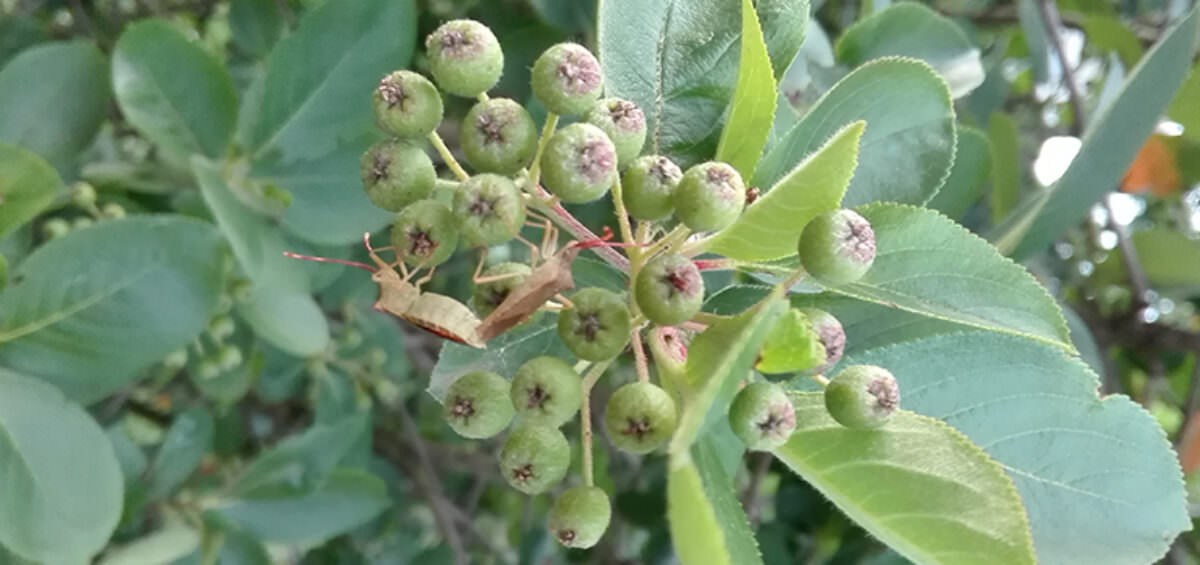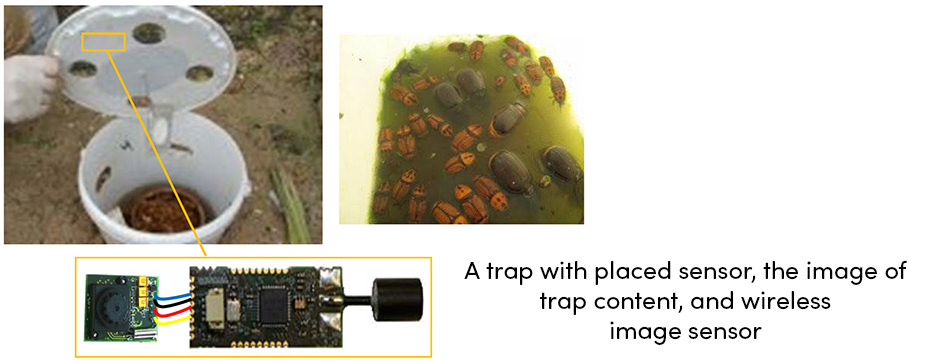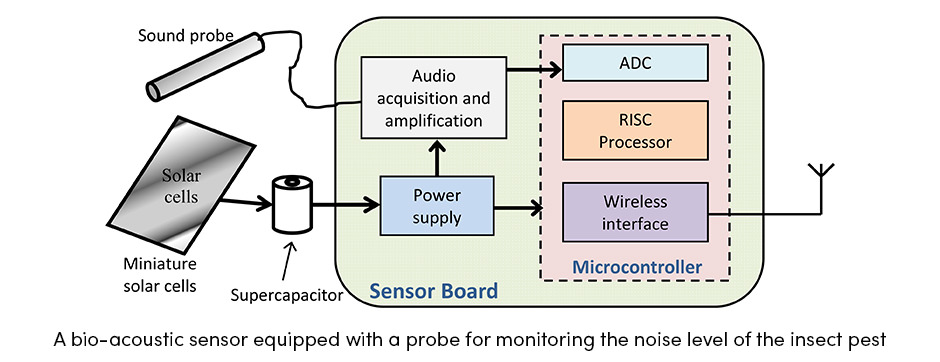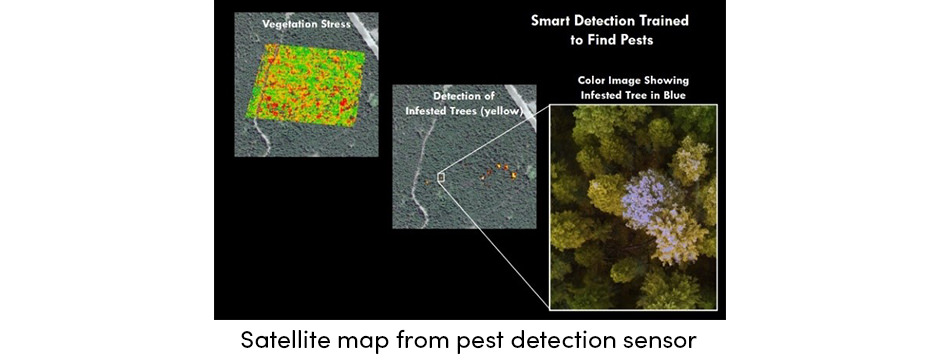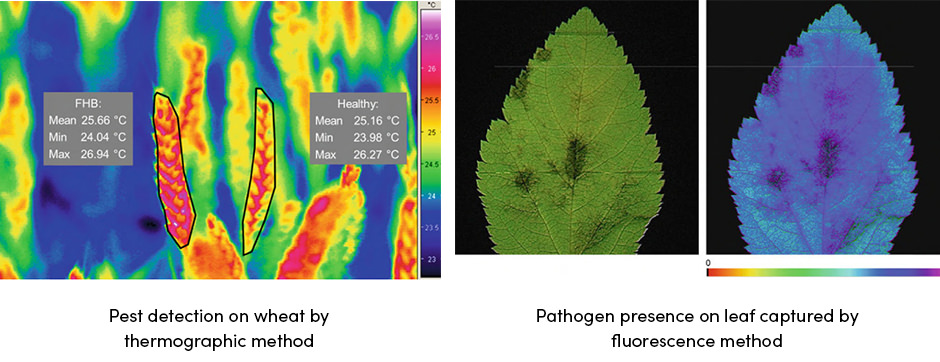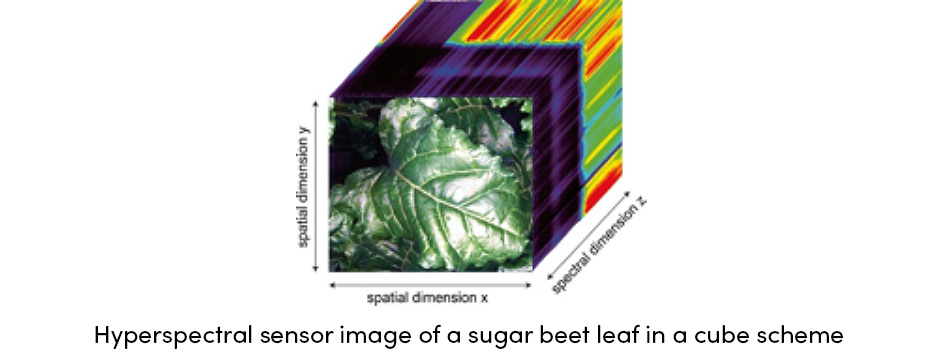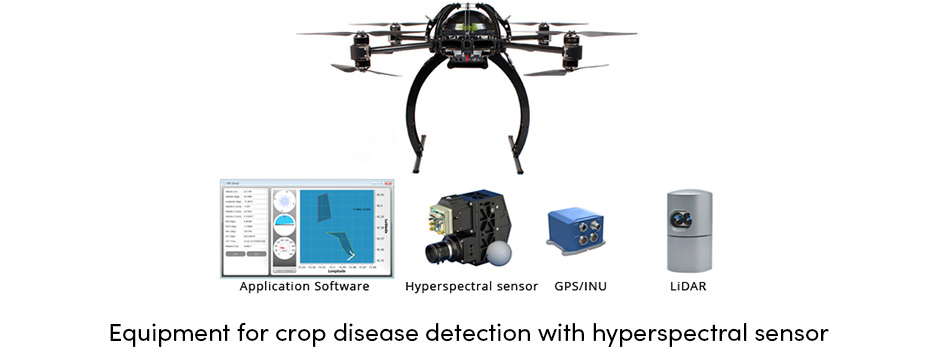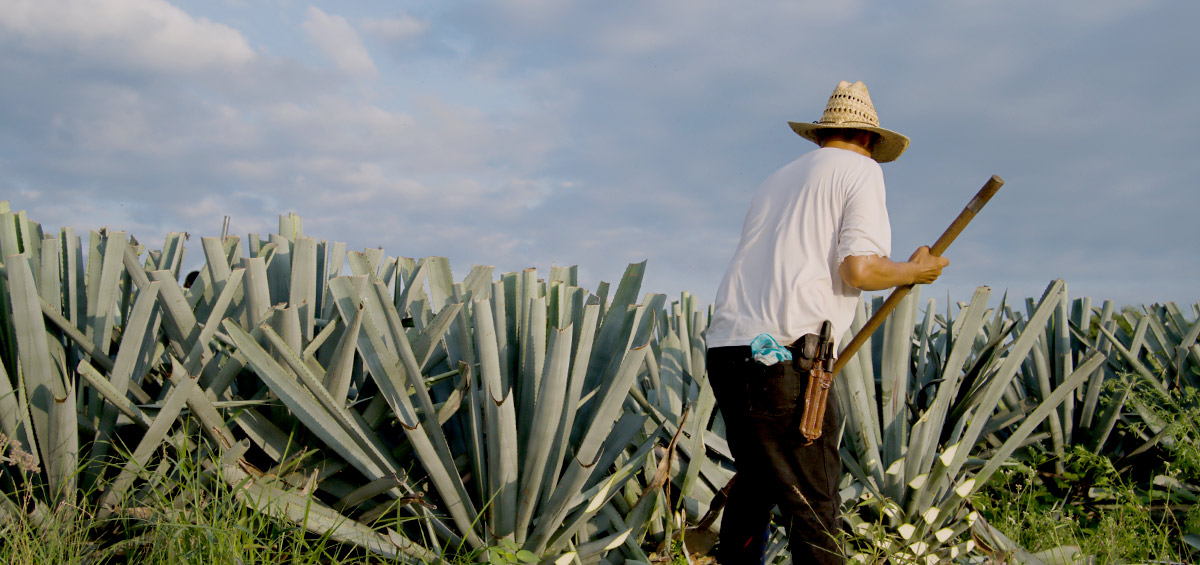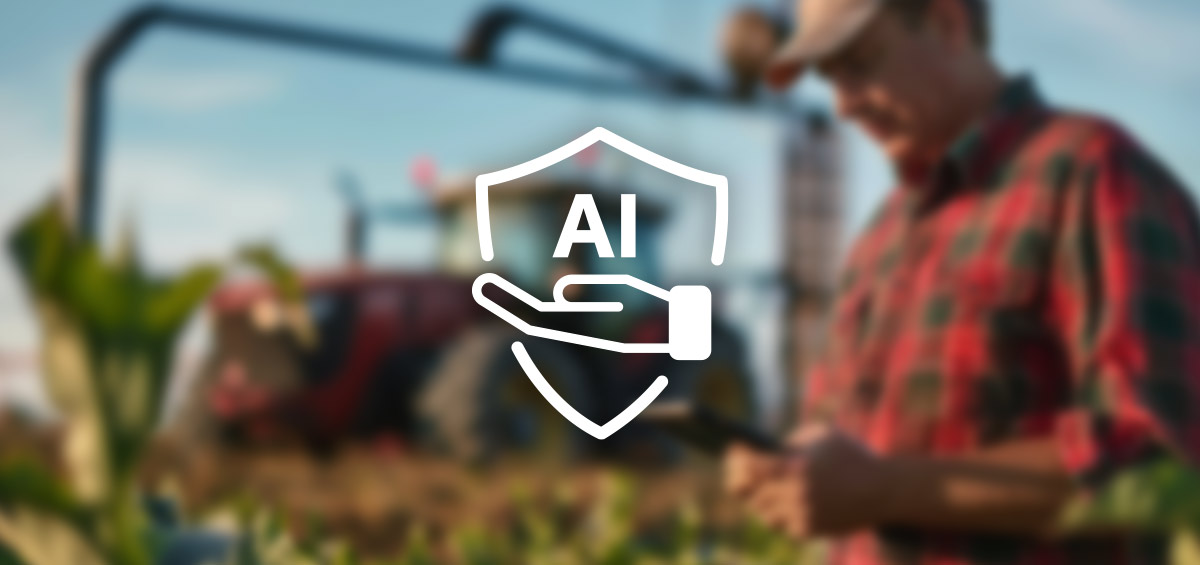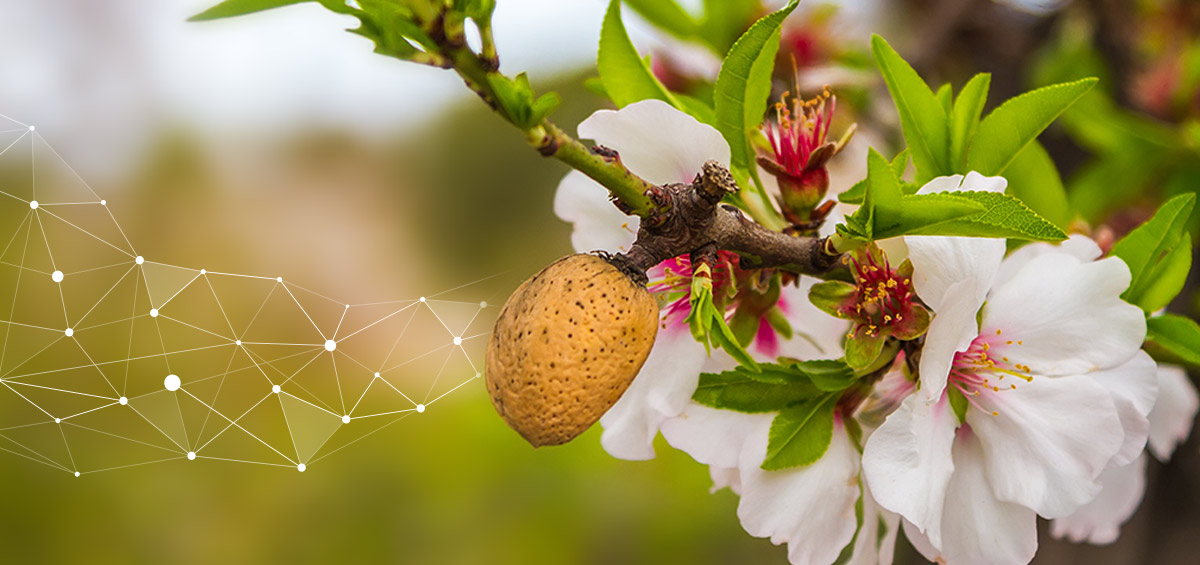Growing crops is a beautiful activity which makes a farmer proud of himself, for he has created new life. Despite its beauty though, crop production requires varying farm activities and constant maintenance in order to provide a high and healthy yield.
Starting with the early crop stages, a farmer must closely monitor crops because of various crop insect pests and diseases. They tend to be the biggest threat to successful crop production. Depending on the crop type and growth stage, it’s estimated that early pest detection can reduce yield loss by up to 20-40% . Therefore, farmers need to put all of their effort into constant crop monitoring.
Instead of walking down the field, today farmers can use various tools to monitor their crops faster and more accurately, such as sensors.
Insect pests and diseases are significant issues in crop protection. For this reason, improved sensors for precision farming are constantly being improved. Such modern technology includes pest detection sensors which detect disease and insect pest occurrence on crops. Basically, the sensors provide real-time data from the field.
Sensors for Accurate Insect Pest Detection
Farmers can use various sensors for insect pest detection on crops. These range from simple to the most complex work principle. Some of the most common sensor types are:
1. Low-power Image Sensors
The low-power image sensor is an wireless autonomous monitoring system that is based on a low-cost image sensor. Placed in a single trap, the wireless sensor periodically captures images of the trap contents and sends them remotely to a control station. Sent images are then used for determination of the number of pests found at each trap. Based on insect population number, a farmer can plan when to start with crop protection and in which field areas.
Farmers use this sensor to monitor large areas with very low energy consumption. Low image sensors provide many benefits in farm production. Some of them are:
- Significant reduction of pest monitoring costs
- No human intervention in the field required
- Applicable for small and big areas
- Low maintenance cost
- Real-time insect pest monitoring
2. Acoustic Sensors
An acoustic sensor is an insect pest detection sensor which works by monitoring the noise level of the insect pests. How does it work? Wireless sensor nodes connected to a base station are placed in the field. When the noise level of the pest crosses the threshold, a sensor transmits that information to the control room computer, which then accurately indicates the infestation area.
These sensors help detect an infestation at a very early stage, thus greatly reducing crop damage. These are a great tool for the monitoring of large field areas with very low energy consumption.
The occurrence of insect pests can be also monitored with sensors for Leaf Area Index (LAI) measuring. Insect pest feeding destroys leaves. This causes plants to lose chlorophyll. This leads to a reduction in the total leaf area, and as a result, the reduction of the plant’s capacity to photosynthesize. By measuring the leaf area index, the sensor can identify an insect attack at an early stage and warn farmers to take the appropriate actions.
This sensor uses radiation measurements and other parameters to accurately calculate leaf area index in real-time, in the field. This type of sensor is also used for crop disease detection.
Sensors for Early Crop Disease Detection
Crop diseases, if not treated timely and properly, can significantly reduce the yield, thus endangering global food security. For this reason, disease protection is the most important task for every farmer. Since early detection can successfully control disease, farmers use modern farm measures to protect their crop. These measures include direct and indirect disease identification methods.
Direct detection methods are mainly laboratory-based techniques of disease detection. The most common are polymerase chain reaction (PCR), immunofluorescence (IF), fluorescence in-situ hybridization (FISH), enzyme-linked immunosorbent assay (ELISA), flow cytometry (FCM), and gas chromatography-mass spectrometry (GC-MS). Although providing accurate data, these methods can’t be used for on-field disease detection.
Unlike direct, indirect methods are used directly in the field. Based on plant stress and levels of plant volatility, indirect method sensors can identify biotic and abiotic stresses, as well as pathogenic diseases in crops. These are optical sensors which, based on thermography, fluorescence imaging, and hyperspectral techniques, are able to predict plant diseases.
1. Thermography Disease Detection Method
Thermography sensors measure the differences in surface temperature of the plant leaves and canopy. The sensor captures infrared radiation emitted from the plant surface.
If there is a pathogen infection, the plant surface temperature will increase due to the transpiration reduction. Based on the change in temperature, the sensor can analyze disease presence. Thermography sensors can detect the changes due to the disease before it even appears.
Precision disease control is limited due to its high sensitivity to the change of environmental conditions during measurements. Another problem is that the thermography method can’t be used to identify the type of infection.
2. Fluorescence Disease Detection Method
Sensors using the fluorescence method measure the chlorophyll fluorescence on the leaves and measure the incident light and the change in fluorescence parameters. It measures changes in chlorophyll and photosynthetic activity, thus detecting the pathogen presence.
Although fluorescence measurement provides sensitive detection of abnormalities in photosynthesis, the practical application of this technique in a field setting is limited.
3. Hyperspectral Disease Detection Method
Sensors implementing the hyperspectral method use a wide range of spectrum, between 350 and 2500 nm, to measure plant health. They measure the changes in reflectance that are the results of the biophysical and biochemical characteristic changes experienced upon infection. Hyperspectral cameras collect the data in three dimension, with X- and Y- axis for spatial, and Z- for spectral, thus providing more detailed and accurate information about plant health. In order to monitor a large field area, sensors are usually fitted to an unmanned aerial vehicle (UAV).
Hyperspectral sensors are used for early crop disease detection, thus allowing a farmer quick and timely crop protection.
4. Gas Chromatography Disease Detection Method
This is a non-optical sensor used for crop disease detection and is used to determine volatile chemical compounds released by the infected plants. Pathogens on plants release specific volatile organic compounds (VOCs) that are characteristic of each pathogen type. The same thing happens when the plant is stressed due to mechanical damage. In this regard, sensors using gas chromatography can accurately identify the type and nature of infection.
The only lack of this method is required sampling of pre-collected volatile organic compounds for a longer time before data analysis, which severely limits its on-field application.
The Future of Pest Detection Sensors
Along with the aforementioned, there are many more sensors that can be used for crop disease and insect pest detection using electrical, chemical, electrochemical, optical, magnetic, or vibrational signals. However, farm technology is modernizing rapidly. New sensors are constantly being developed in order to support early pest identification based on bio-recognition elements such as DNA/RNA, antibody, and enzymes.
In aiming to produce enough food to feed the growing population and to secure a sustainable future for society, farmers need all the help they can get in order to get the best from their farmland. This can be achieved by using sensors in crop production. Knowing what is going on in the field at any given time makes farming easier, secures harvests, and boosts yields, all of which work to protect the environment.
Text sources: MDPI – Monitoring Pest Insect Traps || MDPI – On the Design of a Bioacoustic Sensor… || MDPI – Current and Prospective Methods for Plant Disease Detection
Image sources: Monitoring Pest Insect Traps || Headwall Photonics Inc. || ResearchGate GmbH. || MDPI – On the Design of a Bioacoustic Sensor… || Maria Lodovica Gullino, Peter J. M. Bonant (Eds.); Detection and Diagnostics of Plant Pathogens || SLANTRANGE
